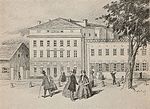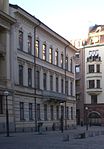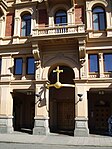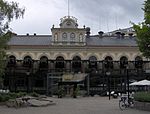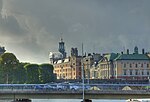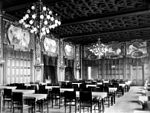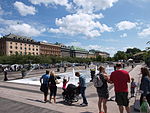Kungsträdgården metro station
1977 establishments in SwedenRailway stations opened in 1977Stockholm metro stations

Kungsträdgården is a station of the Stockholm metro, located in the district of Norrmalm. It is the end station of line 10 and line 11 and was opened on 30 October 1977, as the 91st station and part of the one-station extension from T-Centralen. The platform is located approximately 34 meters underground. The station features relics rescued from the many buildings pulled down during the redevelopment of central Stockholm during the 1950s and 1960s throughout the station. The entrance to the station was originally intended to be in the park Kungsträdgården, but due to the Elm Conflict in 1971 these plans had to change.
Excerpt from the Wikipedia article Kungsträdgården metro station (License: CC BY-SA 3.0, Authors, Images).Kungsträdgården metro station
Arsenalsgatan, Stockholm Norrmalm (Norrmalms stadsdelsområde)
Geographical coordinates (GPS) Address Nearby Places Show on map
Geographical coordinates (GPS)
| Latitude | Longitude |
|---|---|
| N 59.330555555556 ° | E 18.073333333333 ° |
Address
Arsenalsgatan 11
103 27 Stockholm, Norrmalm (Norrmalms stadsdelsområde)
Sweden
Open on Google Maps

